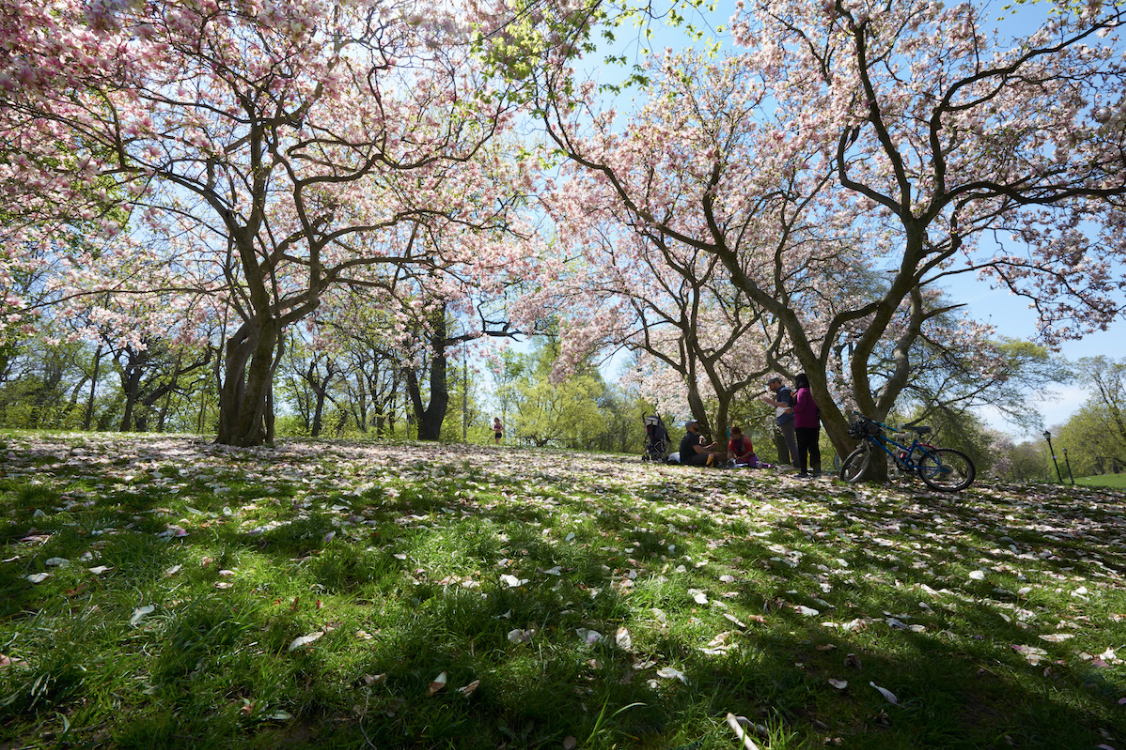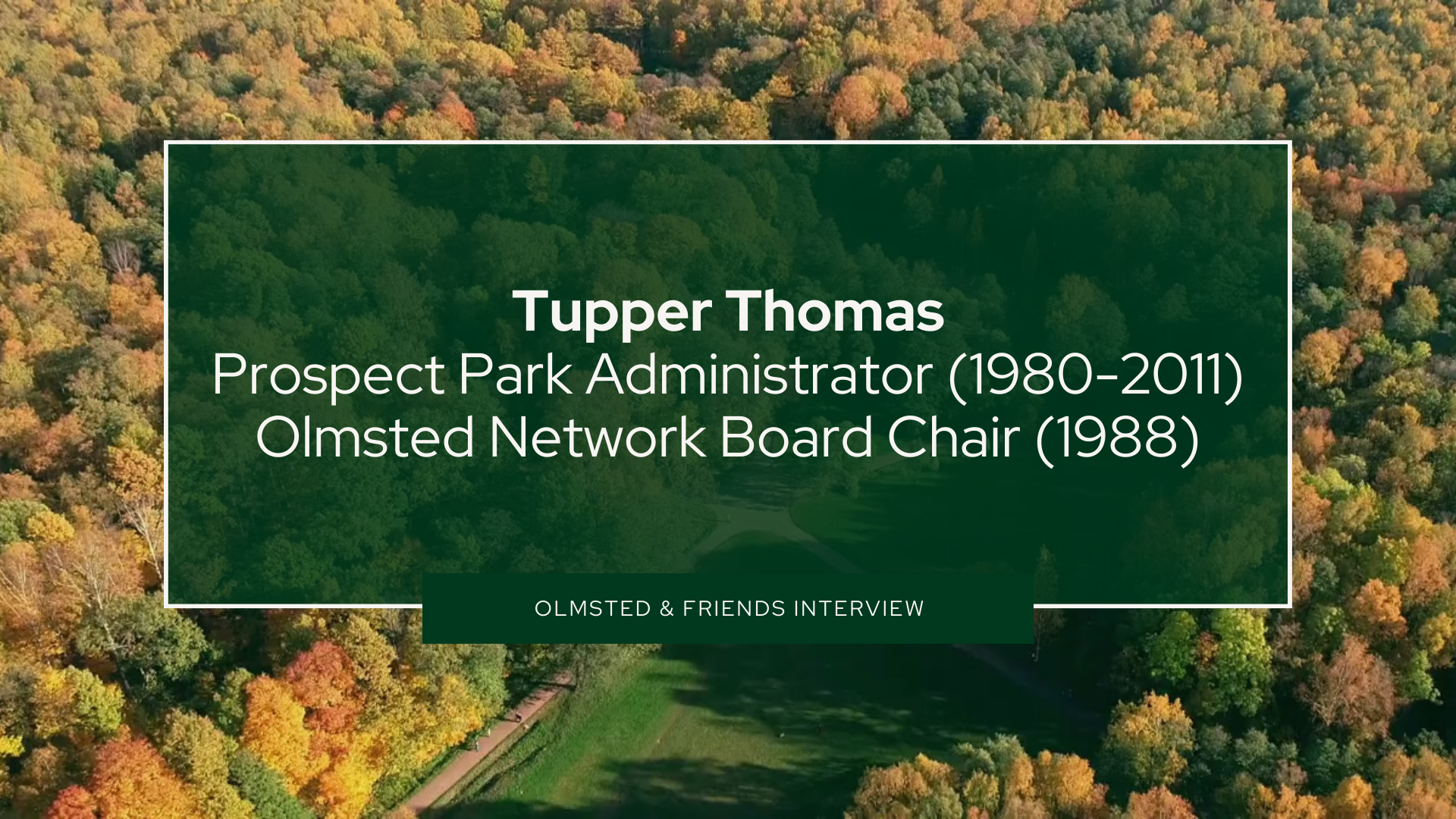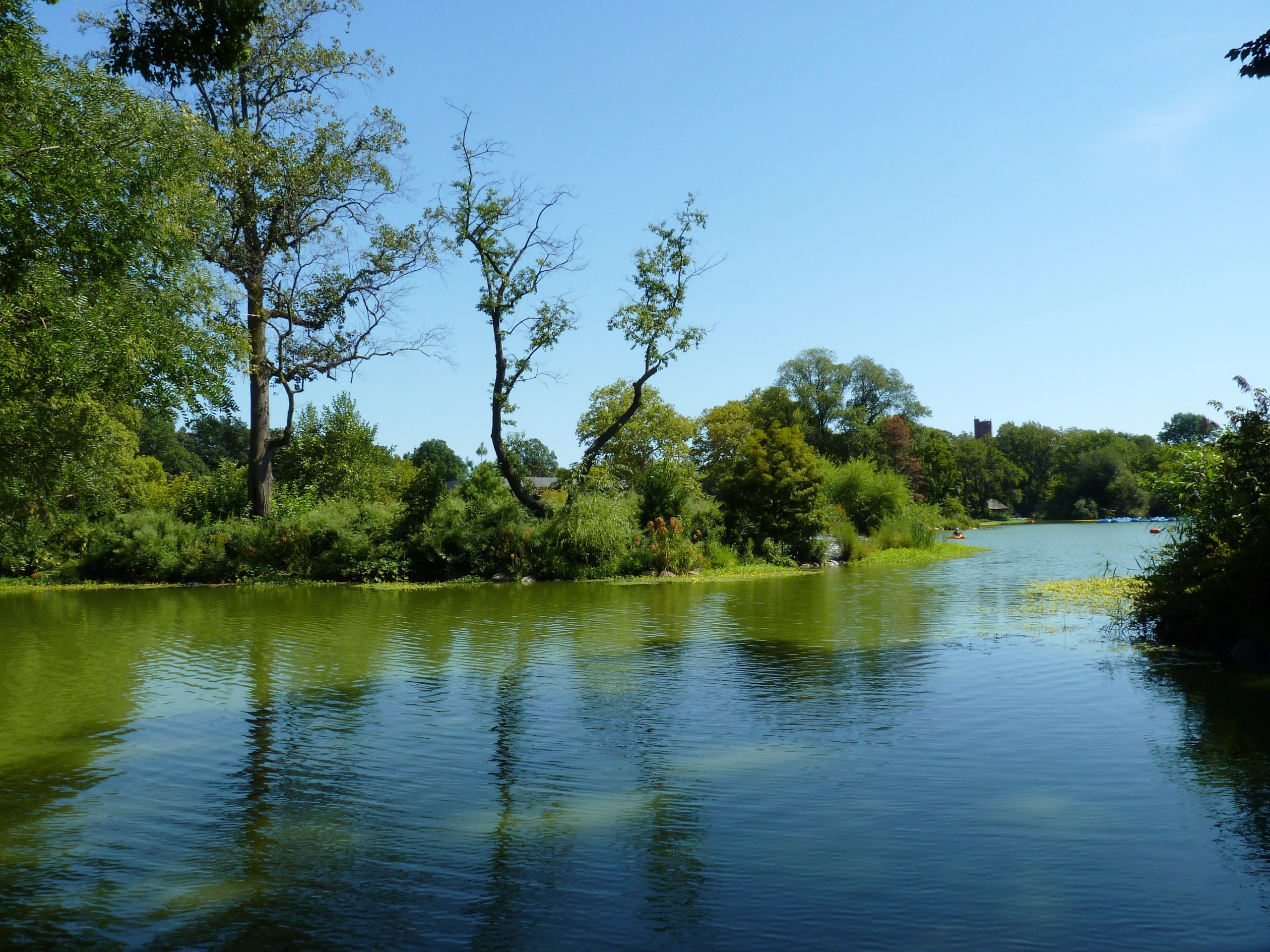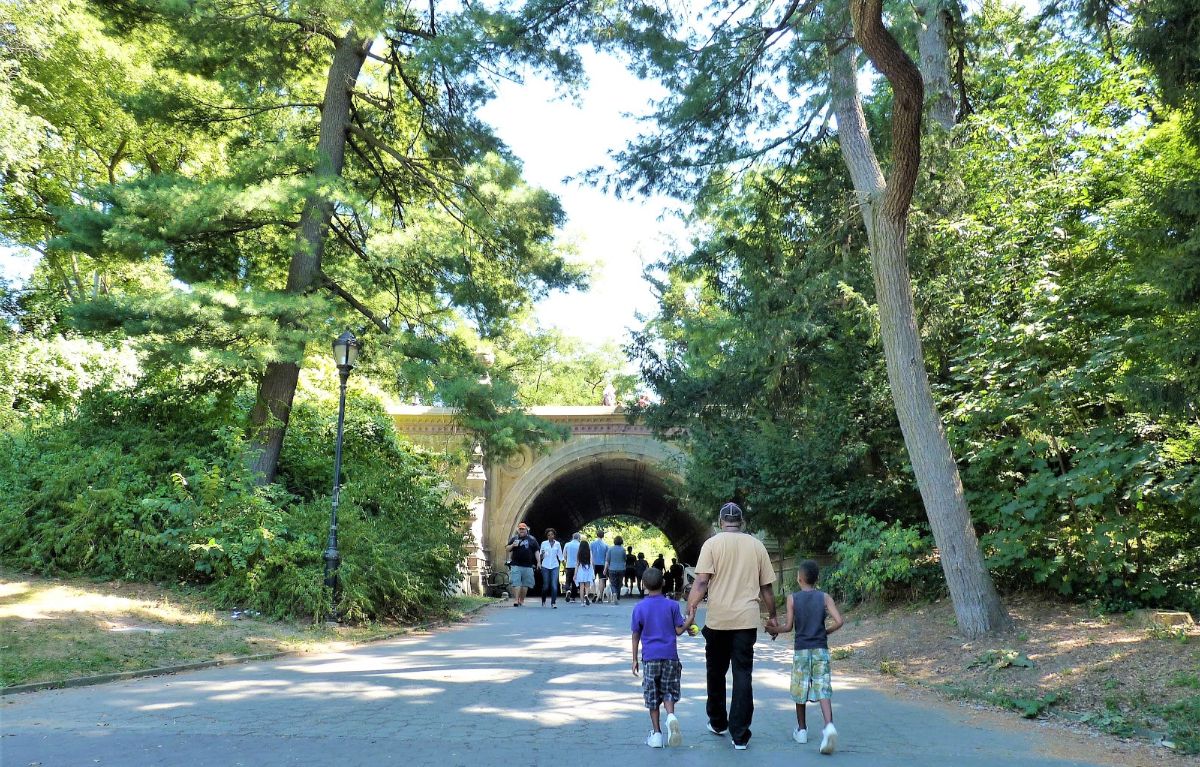
Credit: Martin Seck
| At the end of the 19th century, the burgeoning expansion of Brooklyn and the developing field of urban planning brought forth the desire for more public green space. After the completion of their monumental Central Park design, partners Frederick Law Olmsted and Calvert Vaux were hired by the Brooklyn Parks Commissioners for a new project across the river. In 1866, Olmsted and Vaux’s vision for the expansive 585 acres of forest and rocky farmland in Brooklyn’s Flatbush neighborhood started to come to life. The ambitious design featured a woodland ravine, meandering paths with scenic lookouts, a watercourse sprinkled with waterfalls, and a 90-acre Long Meadow at the heart of it all. The overwhelming public enthusiasm for Prospect Park led to its official opening in 1867, though construction on the green space continued for another seven years. Soon, Olmsted and Vaux had another resounding success, with the Brooklyn Park Commissioners reporting more than 100,000 visitors to the park as of July of 1868. Around 1882, Olmsted wrote to Park Board president James Stranahan that the park was “thoroughly delightful and I am prouder of it than of anything that I have had to do with.” Prospect Park has been reimagined many times throughout the years, always retaining its distinguished planners’ vision. Since 1987, the nonprofit organization Prospect Park Alliance has stewarded the park, maintaining Olmsted and Vaux’s vision, which integrates a rustic aesthetic with features to satisfy the modern public’s recreational demands. The park’s rich history reflects how shared green spaces and urban planning evolve synchronously. With Frederick Law Olmsted and Calvert Vaux as its founding fathers, Prospect Park endures as one of the nation’s premier public parks, drawing more than 10 million visitors from around the world each year. To learn more, visit the Prospect Park Alliance website and see the plans and correspondence here. |











